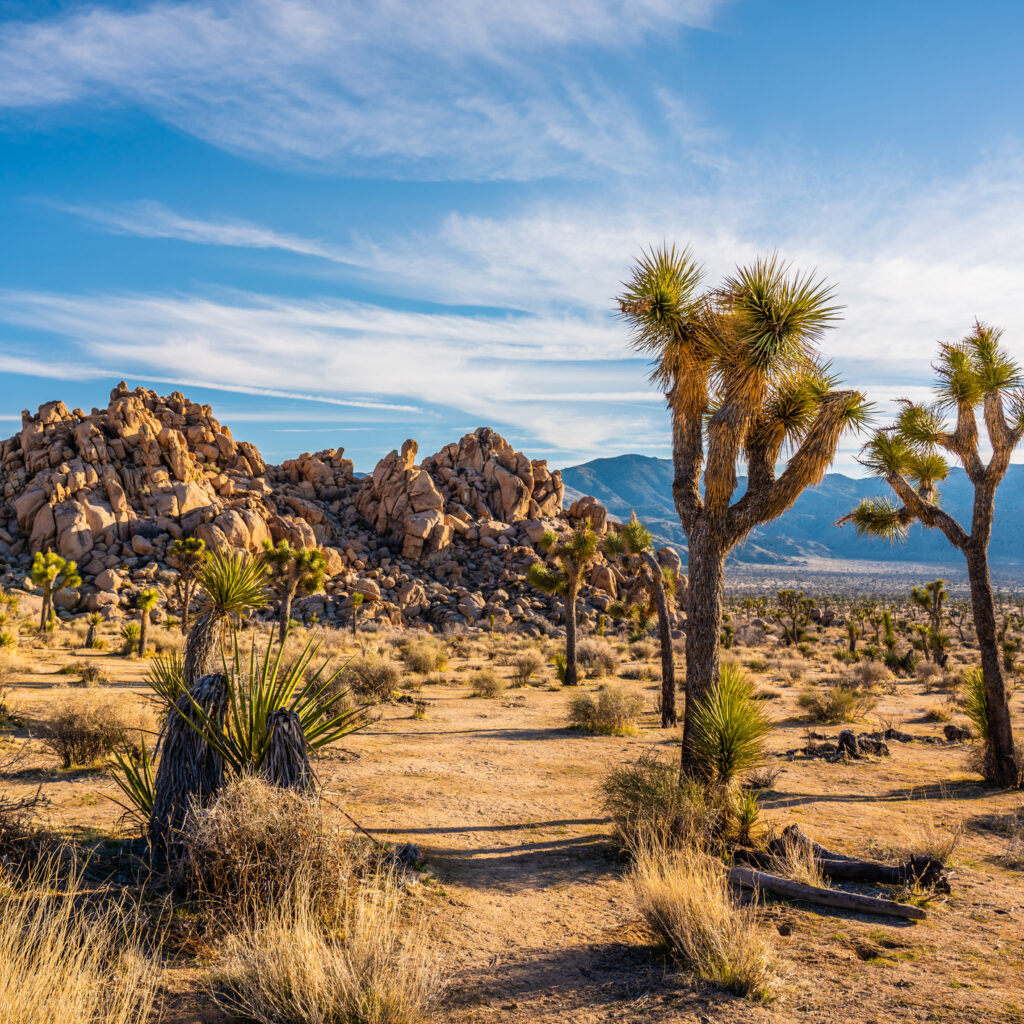Joshua trees are a vital part of the Mojave Desert ecosystem. California State University Northridge evolutionary biologist professor Jeremy Yoder is hoping a new exhibition at the Lancaster Museum of Art and History will draw attention to the endangered species.
“Desert Forest: Life with Joshua Trees,” part of the Getty’s PST Art: Art & Science Collide initiative, opened on Sept. 7 and runs through Dec. 29. The show features artwork of Joshua trees, including paintings, drawings, mixed media, historical works and illustrations of Joshua trees, one of which was created in 1880.
“I hope those who visit the exhibition come with a renewed appreciation for how neat Joshua trees are and the role they can play in helping to protect them,” said Yoder, who provided scientific consultation to the exhibition and contributed two essays to a book developed to accompany the show.
The first essay Yoder wrote covered the Joshua trees’ role in the Mojave Desert ecosystem, their mutualism with Yucca moths, and their evolutionary history up to the present day. The second essay discusses how Joshua trees are being threatened by climate change due to its desert climate becoming hotter and drier, which causes new trees to have difficulty trying to fully grow, so they end up dying.
“Joshua trees are the biggest plants growing in much of the Mojave Desert, especially the Antelope Valley, so they’re a major source of food and shelter for the whole community of birds, mammals, insects, and reptiles that live in the desert,” Yoder said.
The exhibit gave the participating scientists and artists opportunities to interact with one another to plan and present their work. There will be an artwork inspired by data visualization Yoder presented in one of the meetings.
Yoder, a leading academic expert on Joshua trees, said he expects the exhibit will be popular with residents of the Antelope Valley.
“Joshua trees are an important part of their ecosystem, and the exhibition is a good way to highlight the trees’ long-term cultural impact,” he said, adding that it is important that the public is aware of the threats Joshua trees face, which currently have protected status.
He noted that the Mojave Desert, the home for Joshua trees, is under assault from climate change, including wildfires, which is dramatically changing the habitat.
Yoder, who teaches in CSUN’s College of Science and Mathematics, is currently sequencing hundreds of Joshua tree genes to try and understand how the trees cope with variation in desert climates. He has contributed to an experiment involving the western Joshua tree which is found in Joshua Tree National Park, Antelope Valley, and north of Death Valley, and the eastern Joshua tree, which is lower and bushier and found in the Mojave National Preserve.
Like this:
Like Loading...
Related





 Tweet This
Tweet This Facebook
Facebook Digg This
Digg This Bookmark
Bookmark Stumble
Stumble RSS
RSS































REAL NAMES ONLY: All posters must use their real individual or business name. This applies equally to Twitter account holders who use a nickname.
0 Comments
You can be the first one to leave a comment.